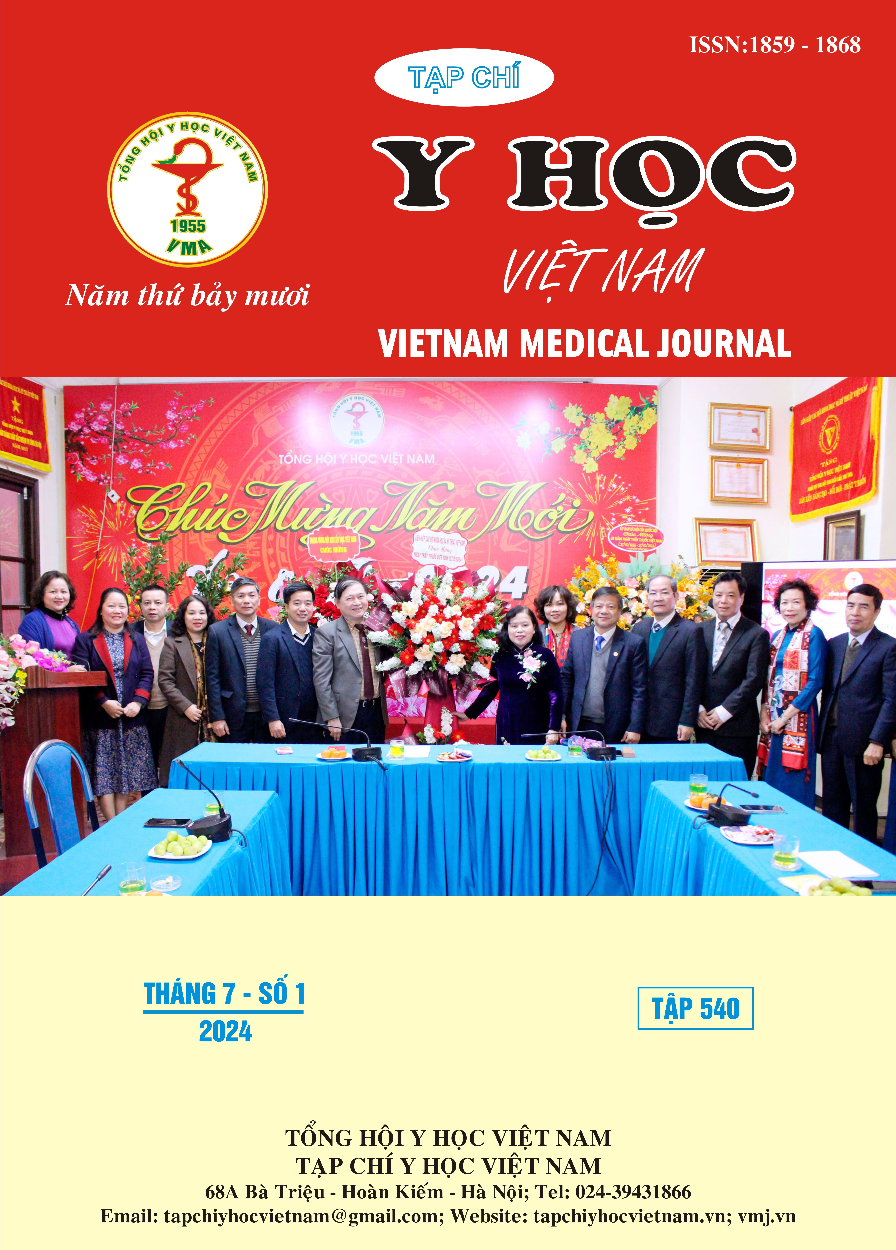EFFICACY OF LIMBAL RELAXING INCISIONS TO CORRECT CORNEAL ASTIGMATISM DURING PHACOEMULSIFICATION SURGERY
Main Article Content
Abstract
Objective: To evaluate the safety and efficacy of limbal relaxing incisions for the correction of corneal astigmatism during phacoemulsification. Subject and method: This was a prospective non-randomized interventional study conducted on patients with cataracts and preexisting keratometric astigmatism ranging from 1.0 to 3.0 diopters (D), who underwent combined phacoemulsification cataract surgery with limbal relaxing incisions (LRI). The LRI incisions were performed at the limbal area, perpendicular to the steepest corneal meridian, with the length of incisions determined using the Nichamin nomogram, ensuring a depth of incision ≥ 90% of the thinnest corneal thickness. The incisions were made using a disposable LRI knife with predefined depths of 500 µm, 550 µm, 600 µm, and 650 µm, respectively. Results: Twenty-one eyes of 14 patients (mean age 56,4 ± 14.8 years) with cataract and coexisting topographic astigmatism were included in the study were studied. The mean preoperative astigmatism was 1.86 ± 0.47 D. The mean postoperative astigmatism at 1 week, 1 month, 3 months, and 6 months were 0.84 ± 0.31 D, 0.60 ± 0.25 D, 0.65 ± 0.25 D, and 0.64 ± 0.25 D, respectively. The change in the amount of astigmatism from the preoperative value was statistically significant at all postoperative intervals (P < 0,05). At the last follow-up (6 months), the UCVA and BCVA were 8/10 or better in 71.4% of eyes and 95.2% of eyes, respectively. Both UCVA (P<0,05) and BCVA (P<0,05) showed statistically significant improvement compared with preoperative levels. Conclusion: Limbal relaxing incisions (LRI) serve as an effective supplementary technique for correcting corneal astigmatism alongside phacoemulsification cataract surgery, offering the advantages of cost-effectiveness and predictable outcomes.
Article Details
Keywords
Phaco, corneal astigmatism, cataract, limbal relaxing incisions, LRI
References
2. S. Ganekal, S. Dorairaj and V. Jhanji. Limbal relaxing incisions during phacoemulsification: 6-month results. J Cataract Refract Surg, 2011, 37(11): 2081-2.
3. C. Kaufmann, J. Peter, K. Ooi và cộng sự. Limbal relaxing incisions versus on-axis incisions to reduce corneal astigmatism at the time of cataract surgery. J Cataract Refract Surg, 2005, 31(12): 2261-5.
4. J. C. Arraes, F. Cunha, T. A. Arraes và cộng sự. [Limbal relaxing incisions during cataract surgery: one-year follow-up]. Arq Bras Oftalmol, 2006, 69(3): 361-4.
5. Harry W. Roberts, Vijay K. Wagh, Daniel L. Sullivan và cộng sự. Refractive outcomes after limbal relaxing incisions or femtosecond laser arcuate keratotomy to manage corneal astigmatism at the time of cataract surgery. Journal of Cataract & Refractive Surgery, 2018, 44(8):
6. R. Lim, E. Borasio and L. Ilari. Long-term stability of keratometric astigmatism after limbal relaxing incisions. J Cataract Refract Surg, 2014, 40(10): 1676-81.
7. M. J. Carvalho, S. H. Suzuki, L. L. Freitas và cộng sự. Limbal relaxing incisions to correct corneal astigmatism during phacoemulsification. J Refract Surg, 2007, 23(5): 499-504.


